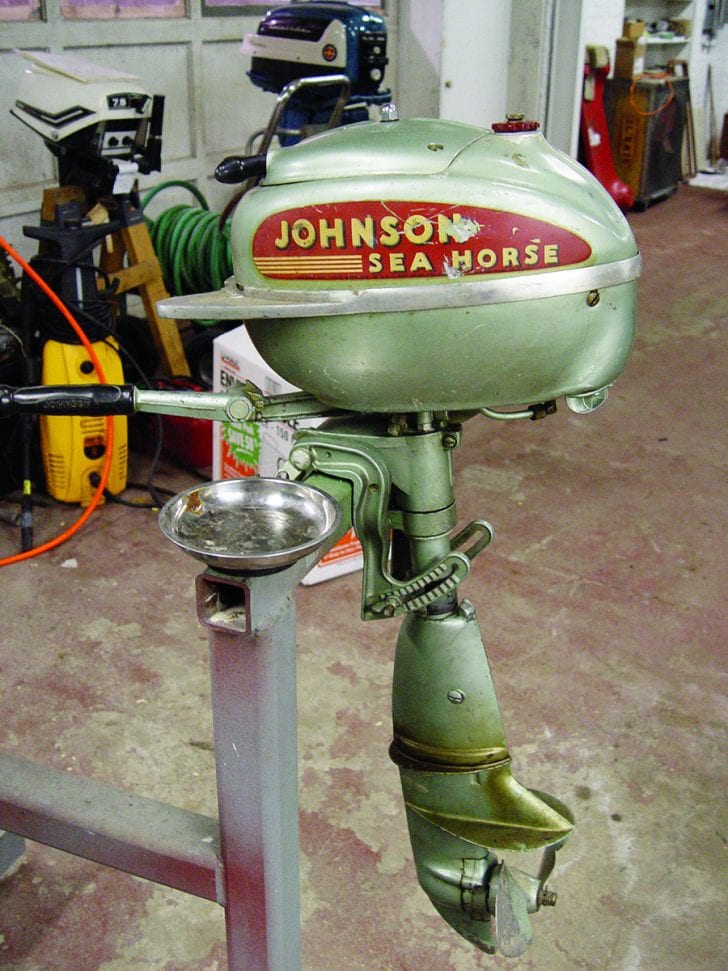by John Tiger, Tiger Outboards
Reading the monthly boating trade magazines, new boat and outboard sales are steadily making gains again; this from the steep downturn of the US recession that began in 2008 (really, a decade ago?). As boating comes back stronger, so does the interest in new outboards—for all purposes, but especially fishing and pontoon boats. As interest in outboard engines increases, what form will it take? Judging by the feedback I’ve witnessed these past few years, this is how it looks to me.
OLD VS. NEW SCHOOL – The outboard industry continues to refine the DFI and four-stroke technology that they introduced a decade and a half ago. Today’s engines are light years ahead of their “old-school” (read: carbureted and EFI) predecessors. Running quality, low-end torque, and of course emissions and fuel economy are all better than they were with older engines, but even improved from the early “clean” engine models released back in the late 1990s and early 2000s.
While older engines are still pretty popular today, I can already see their appeal waning as each year passes. While true diehards who love the smell, smoke and high-winding performance of old-school two-strokes will always be around, very much like the classic car contingent that ignores modern cars for sixties and seventies musclecars, it’s getting harder and harder to ignore the superior all-round performance of new outboards.
GOING GREEN – As I listen to boaters, read message boards, and answer emails and phone calls from outboarders, I find more and more enthusiasts willing to try a new “clean and green” engine. While some are concerned about emissions and wish to pollute less as they enjoy their passion, the majority are really just interested in the operating advantages the new engines offer—cleaner and smoother running, less smoke, easier and quicker no-hassle starting, and most of all (not surprising given the continual rise in fuel prices), the dramatic improvement in fuel economy. Many just want the comfort of knowing they own a new engine with a valid warranty. Most center-console and pontoon owners belong to this group, as the newer four-stroke and DI two-stroke engines fit the bill perfectly; easy starting, quiet running, and very little maintenance. This group is growing, and well it needs to…otherwise, outboard manufacturers would have no one to market to! As the older outboards become more difficult and expensive to operate and repair, newer engines fill the gaps. As the manufacturers advance clean technology, engines will become more “performance-friendly”…with lighter weights, higher revving capabilities, and more power and torque. If you doubt that, just look at the muscle car market as it evolved from the 60s to the supercars of today. While old school guys wax nostalgically about the “good old days”, it’s well accepted that not many of those 60s/70s cars could hold a candle to a new Mustang, Corvette or Challenger in all round performance terms. In the outboard world, while no DFI or four-stroke has been able to replicate the power to weight ratio of a Mercury Racing 2.5 EFI, it will happen sooner or later. Technology will always break through. Today, the torque and horsepower is there (witness Mercury Racing’s 400R, Yamaha’s 350 V-8 and Evinrude’s E-Tec 300); it’s the excess weight that comes with the monster power that detracts from the appeal of some new engines. That will go away too, and boatbuilders will adapt; they already are, building hulls designed and capable of handling the power and weight.
Bottom line? While our industry and pastime continues its steady rise from doldrums of the past recession, outboarding is alive and well and making steady technological advances. When the economy rebounds fully, our passion will bounce back with it. As a lifelong enthusiast, I can only hope that I can continue to write about the engines I have loved since my earliest childhood memories.
